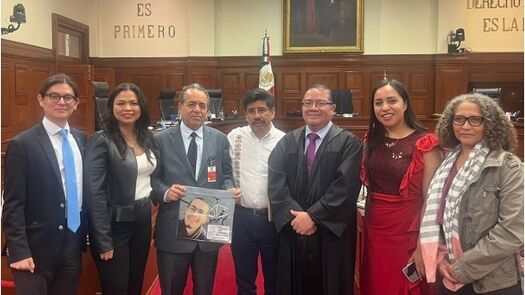December 19, 2025
 The Global Health Advocacy Incubator supports advocacy policy campaigns throughout the cycle of a campaign – beginning, middle and end. One lesson learned is that before a program even formally kicks off, best practice is to lead a scoping visit to explore a country’s political will, feasibility of potential policy objectives, and advocacy capacity of local groups. A scoping visit will also help assess the extent of local advocacy infrastructure and the country’s history of policy advocacy.
The Global Health Advocacy Incubator supports advocacy policy campaigns throughout the cycle of a campaign – beginning, middle and end. One lesson learned is that before a program even formally kicks off, best practice is to lead a scoping visit to explore a country’s political will, feasibility of potential policy objectives, and advocacy capacity of local groups. A scoping visit will also help assess the extent of local advocacy infrastructure and the country’s history of policy advocacy.
One of the newest GHAI programs is a campaign in Colombia that aims to save lives on the roads by building consumer demand for safer vehicles while advocating for strengthened national vehicle safety standards.
GHAI and program partners traveled to Bogota to conduct a formal scoping visit which included meeting with 18 representatives of civil society, high-level government officials and academia. The meetings resulted in clear project objectives, political landscaping and an outline of next steps to build the advocacy campaign. How’d we do it? See some of our top tips below.
- Tap your network, or build one from scratch.
GHAI supports an active obesity prevention campaign in Colombia, so we turned to colleagues who could open doors and make introductions. The most important question we asked in every meeting was “who else do you think we should talk to?” This simple question led to new meetings with community leaders, experts and civil society organizations. - Listen.
It’s critical to go into a scoping visit with an open mind in order to see opportunities and challenges clearly and identify possible solutions. Not all assumptions are accurate, and a successful scoping visit usually requires shifting plans mid-stream or adjusting on the fly when you learn new information that could impact the campaign. Truly listening to what’s being said, and not just what you want to hear, is a vital and hard-earned skill. - Bring the right team.
Leading a meeting requires full focus and attention. Before each meeting, designate a leader or facilitator to guide the discussion and ask probing (but polite!) questions that build on each other. This means other team members will need to fill other roles to keep the meeting moving, including taking notes, managing logistics and tracking follow-ups. A strong team will consist of members who can rotate through these roles and lean on each other to ensure success. - Make an impression.
Showing up to a meeting well-prepared is only half the battle. A scoping visit is about building a community and identifying vital partners who will lead your project to success. Ensure you have appropriate cultural context and language abilities to make meaningful connections and understand the full range of inputs you are receiving. It’s also vital to write prompt, personal thank you notes, and deliver on any promised follow-ups to build trust and strengthen relationships. - Keep moving forward.
It’s tempting to take a break after a successful scoping visit, but it’s even more important to prepare a final report before key details are lost. A GHAI scoping visit is not complete until we deliver a customized accounting of meetings and lessons learned. Our report might include a feasibility assessment of policy objectives under consideration, an analysis of current political will and a summary of opportunities and deterrents to achieving policy change, with an action plan that has recommendations for next steps to build a campaign and ensure policy victory.
Photo credit: Latin NCAP



